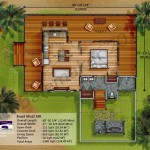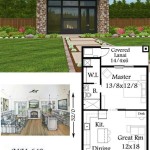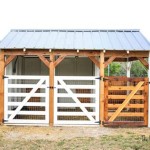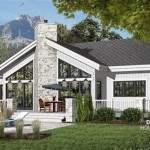Coastal Living House Plans: Design Your Dream Beachfront Home
Coastal living evokes images of sun-drenched days, gentle sea breezes, and the soothing sounds of ocean waves. To truly embrace this lifestyle, the design of a beachfront home should seamlessly integrate with its natural surroundings, offering both comfort and aesthetic appeal. Coastal living house plans are specifically conceived to address the unique challenges and opportunities presented by waterfront properties, ensuring a residence that is both beautiful and resilient.
These plans often incorporate elements that maximize views, promote natural ventilation, and withstand the harsh coastal environment. From quaint cottages to sprawling villas, there is a diverse range of coastal living house plans to suit different tastes, budgets, and site conditions. Careful consideration of factors such as orientation, materials, and structural design is crucial for creating a beachfront home that is both functional and aesthetically pleasing.
The attractiveness of the coast is undeniable. Choosing the right house plan is critical to realizing the dream of a beachfront home. This article will delve into key aspects of coastal living house plans, exploring the considerations, common features, and design principles that contribute to the creation of ideal beachfront residences.
Understanding the Coastal Environment
The coastal environment presents a unique set of challenges that must be addressed in the design of a beachfront home. Exposure to salt air, strong winds, and the potential for flooding or storm surge necessitates careful planning and the selection of durable materials. Understanding these environmental factors is essential for creating a home that can withstand the rigors of coastal living.
One of the primary concerns is corrosion from salt air. Saltwater can accelerate the deterioration of many building materials, including metal, concrete, and wood. Therefore, it is crucial to choose materials that are resistant to corrosion, such as stainless steel, fiberglass, and pressure-treated lumber. Regular maintenance and inspections are also essential for preventing damage and prolonging the lifespan of the home.
Strong winds are another significant consideration. Coastal areas are often subject to high winds, particularly during storms. The design of the home should be able to withstand these forces, with features such as reinforced roofs, impact-resistant windows, and secure connections between structural elements. Wind-resistant landscaping can also help to protect the home from wind damage.
The potential for flooding or storm surge is a critical concern for beachfront properties. Building codes in coastal areas often require homes to be elevated above the base flood elevation, which is the predicted height of floodwaters during a major storm. This elevation helps to protect the home from flood damage and ensures that occupants have time to evacuate if necessary. Additionally, flood-resistant materials should be used in the construction of the lower levels of the home.
Beyond structural considerations, the coastal environment also influences the aesthetic design of the home. Many coastal living house plans incorporate features that maximize views of the ocean and surrounding landscape. Large windows, decks, and balconies are common elements, allowing residents to enjoy the beauty of their surroundings. The use of natural light and ventilation is also important, creating a comfortable and energy-efficient living space.
Thoughtful consideration of the coastal environment is paramount for creating a beachfront home that is both beautiful and resilient. By addressing the challenges posed by salt air, strong winds, and the potential for flooding, homeowners can ensure that their coastal residence will provide years of enjoyment and protection.
Key Design Elements in Coastal House Plans
Coastal house plans are characterized by several key design elements that reflect the unique requirements and aesthetics of beachfront living. These elements include open floor plans, maximizing natural light and ventilation, utilizing outdoor living spaces, and incorporating coastal-inspired architectural details. The integration of these features creates a harmonious and comfortable living environment that celebrates the beauty of the coast.
Open floor plans are a common feature of coastal house plans, promoting a sense of spaciousness and connectivity. These plans typically feature large, open living areas that flow seamlessly into the kitchen and dining areas. This layout maximizes views of the ocean and allows for easy movement and interaction between family members and guests. Open floor plans also facilitate natural ventilation, helping to keep the home cool and comfortable.
Maximizing natural light and ventilation is another important design consideration. Large windows and glass doors are strategically placed to capture sunlight and provide panoramic views of the ocean. Skylights and clerestory windows can also be used to bring natural light into interior spaces. Cross-ventilation is achieved by positioning windows and doors in opposite walls, allowing for the circulation of fresh air throughout the home. The use of light-colored materials and reflective surfaces can further enhance the brightness and airiness of the interior spaces.
Outdoor living spaces are an integral part of coastal house plans. Decks, porches, and patios provide opportunities to enjoy the outdoors and take advantage of the ocean breeze. These spaces are often designed as extensions of the interior living areas, with comfortable seating, dining areas, and outdoor kitchens. Outdoor showers are also a common feature, allowing residents to rinse off after a swim in the ocean. Landscaping with native plants can create a natural and inviting outdoor environment.
Coastal-inspired architectural details add to the charm and character of coastal homes. These details may include elements such as shingle siding, gable roofs, wraparound porches, and nautical-themed accents. The use of natural materials, such as wood and stone, can further enhance the coastal aesthetic. The color palette often consists of whites, blues, and greens, reflecting the colors of the sea and sky. These design details create a cohesive and visually appealing architectural style that complements the coastal environment.
The thoughtful integration of these design elements creates a coastal home that is both functional and aesthetically pleasing. Open floor plans promote spaciousness and connectivity, maximizing natural light and ventilation creates a comfortable living environment, outdoor living spaces provide opportunities to enjoy the outdoors, and coastal-inspired architectural details add to the charm and character of the home. These features combine to create a dream beachfront residence that embraces the beauty and tranquility of coastal living.
Selecting the Right Materials and Construction Methods
The selection of appropriate materials and construction methods is paramount for ensuring the durability and longevity of a coastal home. The harsh coastal environment demands materials that are resistant to salt air, strong winds, and the potential for flooding. Similarly, construction methods must be chosen to withstand these forces and provide a structurally sound and resilient dwelling. Careful attention to material selection and construction techniques is critical for protecting the investment and ensuring the long-term enjoyment of the home.
For exterior cladding, materials such as fiber cement siding, cedar shingles, and vinyl siding are popular choices. Fiber cement siding is a durable and low-maintenance option that is resistant to moisture, insects, and fire. Cedar shingles offer a natural and aesthetically pleasing look, but require regular maintenance to prevent rot and decay. Vinyl siding is a cost-effective option that is easy to install and maintain, but may not be as durable as other materials. The selection of the appropriate siding material depends on factors such as budget, aesthetic preferences, and the level of maintenance required.
Roofing materials should also be chosen for their durability and resistance to the elements. Asphalt shingles are a common and affordable option, but may not be suitable for high-wind areas. Metal roofing is a more durable and long-lasting option that can withstand strong winds and salt air. Tile roofing is another attractive and durable option that is often used in coastal areas. The selection of the appropriate roofing material depends on factors such as wind resistance, aesthetic preferences, and cost.
Windows and doors should be chosen for their impact resistance and energy efficiency. Impact-resistant windows and doors are designed to withstand strong winds and flying debris, protecting the home from damage during storms. Energy-efficient windows and doors can help to reduce energy costs and improve the comfort of the home. Materials such as vinyl, fiberglass, and aluminum are commonly used for window and door frames, offering varying levels of durability and maintenance requirements.
For structural elements, pressure-treated lumber and concrete are commonly used. Pressure-treated lumber is resistant to rot and insect damage, making it suitable for framing and other structural applications. Concrete is a strong and durable material that is often used for foundations and walls. In areas prone to flooding, concrete can be used to elevate the home above the base flood elevation, providing protection from flood damage.
Construction methods play a crucial role in ensuring the structural integrity of the coastal home. Proper framing techniques, such as hurricane strapping and reinforced connections, can help to withstand strong winds. Waterproofing measures, such as the installation of a vapor barrier and proper drainage systems, can help to prevent moisture damage. Regular inspections during the construction process can help to identify and correct any potential problems before they become major issues.
Selecting the right materials and construction methods is essential for creating a coastal home that is both durable and resilient. By choosing materials that are resistant to salt air, strong winds, and potential flooding, and by employing construction methods that ensure structural integrity, homeowners can protect their investment and enjoy their beachfront residence for years to come.

West Indies Caribbean Style Home Plans Sater Design Collection

The Ultimate Guide To Creating A Stunning Coastal Home Edward George
:max_bytes(150000):strip_icc()/beach-bungalow_0-589354045b5f475d8e1041097acbaf56.jpg?strip=all)
14 Small Beach House Plans Under 1 200 Square Feet
:max_bytes(150000):strip_icc()/SL-2009--e70851d071694f7294fb8e47d3dd74d5.jpg?strip=all)
14 Small Beach House Plans Under 1 200 Square Feet

The Ultimate Guide To Creating A Stunning Coastal Home Edward George
:max_bytes(150000):strip_icc()/river-place_1_1-0db8a16001ad4d9db3758c24d5c2b764.jpg?strip=all)
Top 20 Best Selling House Plans

The Ultimate Guide To Creating A Stunning Coastal Home Edward George

California Coastal Farmhouse Beach House Home Bunch Interior Design Ideas

Lake House Plans Waterfront Home Designs

Beach House Plans From Coastal Home
Related Posts








